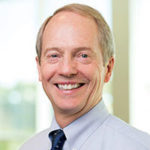Cell Fate Determination in the Lung in Health and Disease: Location and Neighbors Matter (A5)
9:15-11:15 a.m., Sunday
Ballroom D Two (Level 3), KBHCCD
Ten years ago, pulmonologists understood that a damaged adult lung could repair itself under certain circumstances via the plasticity of well-defined progenitor cells that sense when resident cells are damaged.
Although it was known in the medical community that progenitor cells in the lung move out to repair and repopulate portions of damaged lung, ongoing research suggests that progenitor cells are doing more than previously thought.

Gregory P. Downey
Gregory P. Downey, MD, ATSF, a pulmonologist at National Jewish Health in Denver, and one of the session’s co-chairs, explained that it’s now known that progenitor cells can move back and forth between the junctions of the airways and air sacs within the lung to repopulate damaged cells. Such knowledge is opening up many avenues through which researchers can manipulate experimentally and therapeutically to help the lung repair itself after injury.
This research is aided by cell fate determination, through which researchers gain the ability to tag specific cells and follow the cell’s fate. Based on the cell’s change over time, an inference can be made that the cell started out as “Cell Type X” and later turned into “Cell Type Y.”

Bruce Levy
“Finding the signaling pathways and mechanisms to promote the healthy repair [of the lung] may provide a window in addressing some pretty important diseases of the lung,” said Bruce D. Levy, MD, ATSF, of Brigham and Women’s Hospital in Boston, a session co-chair.
“This session was designed with a broad audience in mind,” Dr. Levy said. “Any provider—in particular those interested in COPD, pulmonary vascular disease, and those interested in translational research—(will find value here).” Additional conditions of interest include pulmonary fibrosis, pulmonary infections, ARDS, and LAM.
Although there is still much research to be completed before clinical interface, the topics within the symposia will be relevant to next-step translational research that will lead to the therapeutic interventions relevant to clinical care. Basic scientists, clinical translational scientists, and providers caring for patients will be brought up to date on the restorative repair processes that occur in the lung.
Dr. Levy explained the dream of such research is to treat patients who have suffered a maladaptive repair process by being able to go in and regenerate those portions of the lung that have been injured. Another possibility includes the ability to extract cells from the body to create cell structures like organoids, which could be helpful when reintroducing the cells back into the patient to repair areas of lung damage and recapture normal function.
“Attendees can certainly get involved and identify people working on topics within this complex subject matter that’s relevant to their projects or interests,” Dr. Levy said.
Basic Science Core Sessions
Don’t miss these other sessions in the Basic Science Core, all taking place in Ballroom D Two (Level 3), KBHCCD.
Sunday
2:15-4:15 p.m
Living and Dying by Lipids: Resolving Inflammation and Tempting Cell Fate (A85)
Monday
9:15-11:15 a.m.
Til Death Do Us Part: Cell Fate and Obstructive Lung Disease (B5)
2:15-4:15 p.m.
They’ve Got the Beat: Cilia in Development and Disease (B85)
Tuesday
9:15-11:15 a.m.
Discovering the Role of Stem Cell Fate in Lung Injury and Fibrosis (C5)
